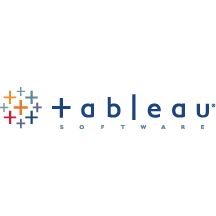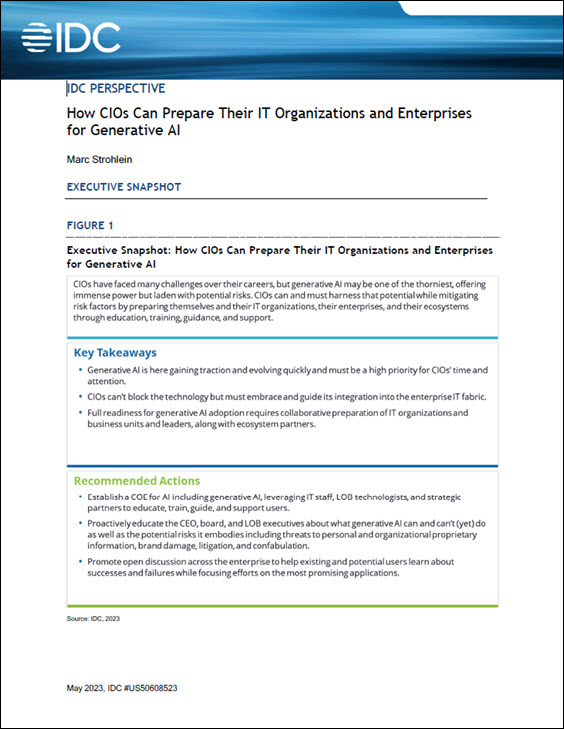 Tableau Software, Inc. (NYSE: DATA), a leading analytics platform, today announced the general availability of Tableau 2018.2. This release introduces a new Extensions API that enables customers to drag and drop third party functionality directly into a dashboard. Publicly available extensions can be found in the new Extension Gallery at tableau.com/extensions. Additionally, Tableau customers can now more easily administer Tableau Server directly in the browser, thanks to the new Tableau Services Manager. Tableau 2018.2 also includes the ability to join data sources based on spatial data, and brand new mobile dashboard formatting tools to improve mobile consumption of analytical content.
Tableau Software, Inc. (NYSE: DATA), a leading analytics platform, today announced the general availability of Tableau 2018.2. This release introduces a new Extensions API that enables customers to drag and drop third party functionality directly into a dashboard. Publicly available extensions can be found in the new Extension Gallery at tableau.com/extensions. Additionally, Tableau customers can now more easily administer Tableau Server directly in the browser, thanks to the new Tableau Services Manager. Tableau 2018.2 also includes the ability to join data sources based on spatial data, and brand new mobile dashboard formatting tools to improve mobile consumption of analytical content.
The Extensions API in Tableau 2018.2 unleashes the innovation of our community. For the first time, customers, partners, and developers can add new functionality right into the Tableau platform,” said Francois Ajenstat, Chief Product Officer at Tableau. “From custom visualizations and write-back, to advanced and predictive analytics, the possibilities are endless and only limited by a developer’s creativity.”
Dashboard Extensions Gives Customers New Functionality
The new Extensions API enables customers to drag and drop third party functionality directly into Tableau. For example, with the new Tableau extension built by partner DataRobot, customers can drag and drop advanced predictive models on top of their existing dashboards. Customers can also build their own extensions to create custom functionality. This means IT can use the API to create a custom writeback extension, allowing analysts to update an inventory management system, for example, without ever leaving Tableau.
Many of our customers already use Tableau for their business intelligence and analytics needs, but have been looking to extend the power of Tableau to include the results of machine learning models to enhance visual analysis and gain deeper insights into their business operations,” said Seann Gardiner, SVP of Business Development, DataRobot. “The recent enhancements Tableau has made, specifically around its Dashboard Extensions, will allow us to deliver tremendous value to our customers and support our vision of delivering on the AI-driven enterprise.”
Customers can browse a selection of extensions built by Tableau’s partners in the new Extension Gallery. Developers and partners can create new functionalities leveraging the Extensions API available at tableau.com/developers, extending and customizing the power of Tableau like never before. IT administrators will have full control of which extensions are allowed to run, preserving best practices for data governance and security.
Administer Tableau Server Directly in the Browser with Tableau Services Manager
Managing Tableau Server is easier than ever with Tableau Services Manager (TSM), a comprehensive tool for Tableau administrators to install and configure Tableau Server on both Windows and Linux. The redesigned management architecture lets customers update several Tableau Server configurations without restarting the server, resulting in less downtime. In addition, the new TSM adds three ways to manage your Server deployment: with a brand new web UI, command line interface, and a public REST API.
More Features Based on Feedback from Tableau Community
Tableau also made additional updates in 2018.2 as part of continuous improvements based on feedback from the Tableau Community. With the new Spatial Join, it is now possible to join various data sources together with a single common attribute like location. For example, neighborhood boundaries can be joined with package delivery data to analyze the number of orders coming from each neighborhood.
New Automatic Mobile Layouts helps make sure people on-the-go always have access to data by automatically creating phone and tablet layouts for dashboards by applying mobile best practices. Layouts can be used as is, or further customized with the Device Designer.
Sign up for the free insideAI News newsletter.





Tableau is truly amazing, Monty. For those of your readers who are looking to get employed to manage Tableau at organizations, I’ve put together a thoughtful guide for them, which has been vetted by Silicon Valley elites. Check it out right here: https://www.algrim.co/posts/85-15-best-tableau-interview-questions-to-hire-or-get-hired-with